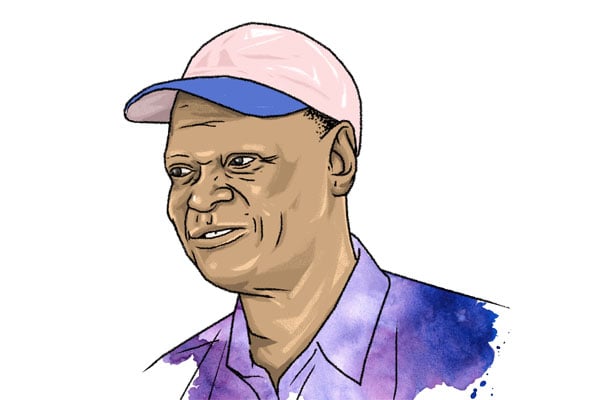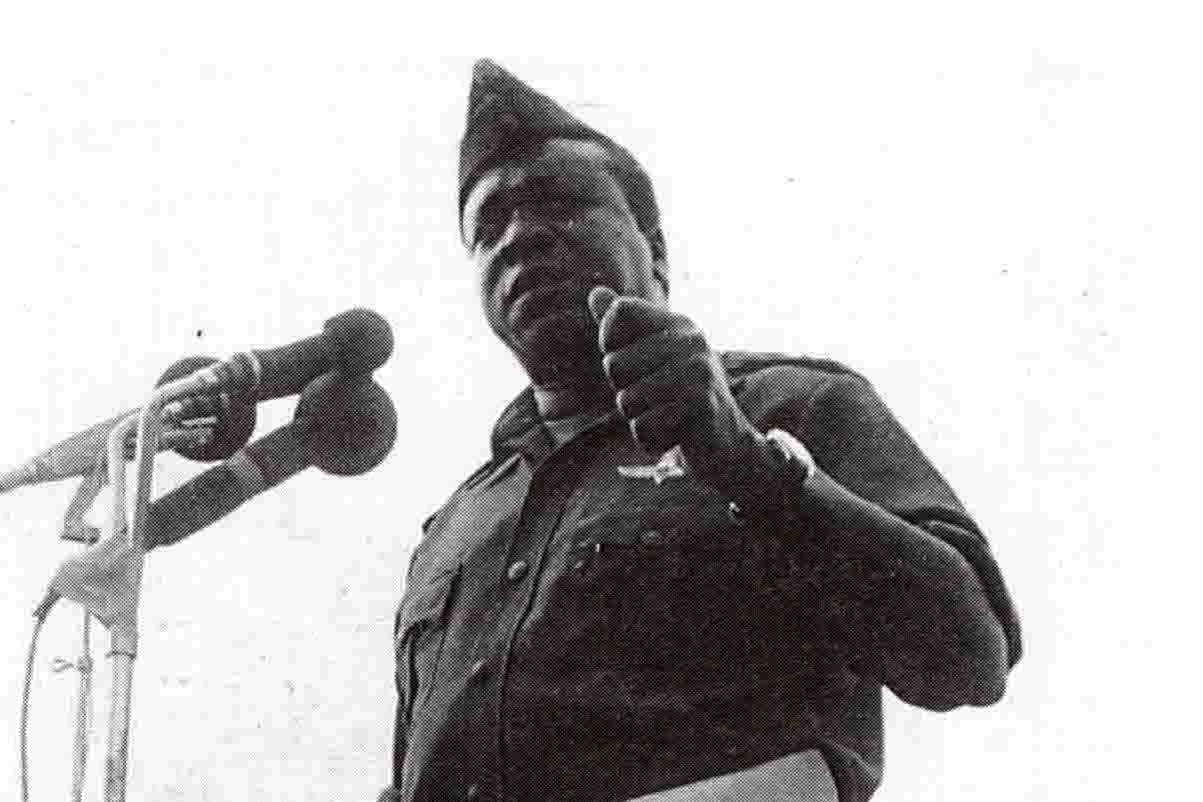
Prof Charles Kwesiga, the executive director of the Uganda Industrial Research Institute
Prof Charles Kwesiga adores his family a lot, and that is something you’ll know about him even if you are a passerby. His office is full of their photos. Besides, the grin on his face when he speaks about one of them is exuberant.
When we first meet, he shows me his three daughters—his son works as an assistant general manager at a golf resort; one of his daughter is a public health consultant, who is married to a German man, and they reside in Kampala; the eldest is a professor at Bryant University in the US. The youngest is employed as a deputy principal at a school in Merryland.
“The husband’s birthday is today. I just talked to them. They are on their way to the Caribbean to celebrate the birthday and something like that,” he softly says while showing me the couple’s wedding pictures.
“That is the family I have. And that is the Kenyan link,” he adds.
Prof Kwesiga is married to Justine Kwesiga, a Kenyan woman who passed away on February 16, 2021, in Machakos, Kenya, her home country. She had travelled to see her family.
He was trying to immerse himself in the wallowing of Kenyan politics by reading the Sunday Nation earlier when I met him. He was even charmed when we had a conversation about the Gen Z-fuelled civil disobedience that forced the Ruto administration to withdraw an unpopular Bill.
“Why do you think they are protesting with such anger? Burning flags, the national assembly and demonstrating so much rage?” he asks.
“Maybe they are so hurt,” I respond.
He grins, but says nothing in return. He is more interested in telling me about his past.
In Amin’s clutches
Prof Kwesiga fled Uganda in May 1972 while evading the Amin administration. He had imprisoned him for roughly a year and a half, first in Luzira and then, just barely, for his execution in Mutukula. He and 63 other inmates were the only ones to escape Mutukula alive out of the 625 that had been incarcerated there.
“Yeah,” he says, with a low pitched sound that’s endowed with great relief, adding, “After we came out, I was on the run for a while because the whole release was a ploy. They had wanted to show the world that they were releasing detainees, but they didn’t want the story of Mutukula to come out. They had killed more than 500 prisoners.”
He proceeds to reveal thus: “They made [up] a story and said that Hassan Mohammed, who was one of the last to die, had been CID Chief in Obote I, so they thought people would read the propaganda that he was killed because he was trying to incite a riot in the detention centre and he was overpowered and killed ‘and those who didn’t participate, are hereby free.’ That’s how I got out.”
So after that, the soldiers, he says, would follow them quietly. He was even compelled to go to his home town in Kabale District, where he was flushed out.
A brief breakdown in conversation occurs when my companion becomes enthused about Prof Kwesiga’s genuine village buddy status. They chuckle and smile as they talk about the village and other places they know about that I am unaware of.
“I was intercepted…it was crazy,” he says after returning back to our conversation. “Maybe they expected a gruff-looking gorilla type and here I was very boyish. I was about 22 years of age. This was in 1972. I escaped and returned to Kampala. Then later, a year later, Mr Kategaya, there was another old boy called Mr Mukereine who found a safe house for me in Bugolobi flats.”
Light at the tunnel’s end
Prof Kwesiga spent two months hiding in Bugolobi. It was doubtless a dark moment, but he nevertheless exudes charm as he tells this tale. Perhaps this is occasioned by the memories and the events that followed.
During that stay in a safe house, he was reading and planning for his escape, and on May 6, 1972, he said, “I found myself in Nairobi.” He spent roughly five years living in Kenya, during which time he began working in civil aviation, received technician training and certifications, got married, and began a new life.
However, when he reported to work in June 1976, his supervisors informed him that he had been moved to Entebbe Airport. Even in his most optimistic fantasies, he would never want to be able to choose that location.
“I said: ‘What! Are you crazy?’ I went to the director general and he said, ‘well, this is a political move and I can’t help you’ and I was aggressively asking why. He explained what he thought he knew. But President Amin had negotiated with Arap Moi, who was then the Vice President of Kenya and they had agreed that he could help repatriate some of the people he wanted. So they picked up Kiwanuka, Captain Asua, and another person from a hotel in the centre of Nairobi,” he narrates.
In the Parkland apartment where Prof Kwesiga was staying, he saw President Amin’s agents and the Kenyan police. At that time, he was living at home and had stopped working because, as was previously mentioned, he had been offered a job transfer but had rejected it, leaving him jobless.
Prof Kwesiga recalled thus: “So I heard voices down in the parking lot because I was living on the first floor. So I told madam to check what’s going on down there. She went to the balcony and talked, then in Swahili, ‘who are you looking for?’ They said, ‘we want this Ugandan who lives in this block.’ She said, ‘there is no Ugandan here.”
He adds: “The guys insisted and said, ‘we know there is a Ugandan who lives in this block.’ She insisted that that’s where she lives and if there was one, she would obviously know them. They talk and talk. So she started talking with them in their languages as a Kenyan. They believed her. She said, ‘you go to high-end apartments, You might find Ugandans there but not here.’”
Another escape
Prof Kwesiga managed to survive thanks to the abilities of his Kenyan spouse, who persuaded the men that the man from Uganda was unknown to her.
That is how he came to believe he had to leave Kenya. In his quest to find a way out, he was introduced by one of his friends to a Geneva-based organisation that provided scholarships. He quickly adds the word “competitive.”
They sent him a bunch of tests, which he aced, and instructed him to search for a school of his choosing.
So by January 1977, he was studying industrial engineering in New York.
“So that Kenyan really saved my life,” he notes, and we both laugh.
“Did they come back to look for you right after that?” I ask.
“No, they couldn’t,” he responds. “They were sure that there was no Ugandan in that apartment. And I couldn’t go back because that would be suicidal.”
Returns to Uganda
Prof Kwesiga spent more than 30 years in the United States before returning to Uganda in 2004. He began his career as a presidential advisor for the African Growth and Opportunity Act (AGOA), a trade agreement that allows over 6,000 products to enter the US market duty-free. Afterwards, he joined Nakawa in 2006 to resurrect the Uganda Industrial Research Institute (UIRI).
On January 15, 2020, Prof Kwesiga, in his capacity as executive director, established a $30 million institution with funding from China. The facility, which is housed in Namanve Industrial Park, offers trainees access to cutting-edge equipment.
After outperforming other regional partners in innovation, UIRI was eventually selected as an East African Community Centre of Excellence in Research and Development in 2012.
The professor owes his life to the harsh experience he has gone through to this point. This man, who attended Ntare School with President Museveni, was exceptionally intelligent and very well-liked in school. Even when motivated by school politics, President Museveni sought his counsel and assistance, he says.
Subsequently, he presents to me a photograph that he obtained some time back, in which every president of Kenya since the country’s independence is present except William Ruto. This black-and-white image features Mwai Kibaki, dressed in a black jacket and white pants, Daniel Arap Moi, dressed in a black suit, and Jomo Kenyata, who is holding the hand of Uhuru Kenyatta, the former president of Kenya. They were like on a family walk in an open field.
“Mzee Kenyatta was the president by the time I was in exile in Kenya. Arap Moi is the man who almost wrote me off when I was there. Then Mwai Kibaki, who had been a minister of finance and a close friend of another friend during the time I was in Kenya. So I used to meet him at some hotel some afternoons when I was off-duty. I’d enjoy drinks with Kibaki. What a wonderful personality, man! Then the last one is Uhuru,” he observes.

